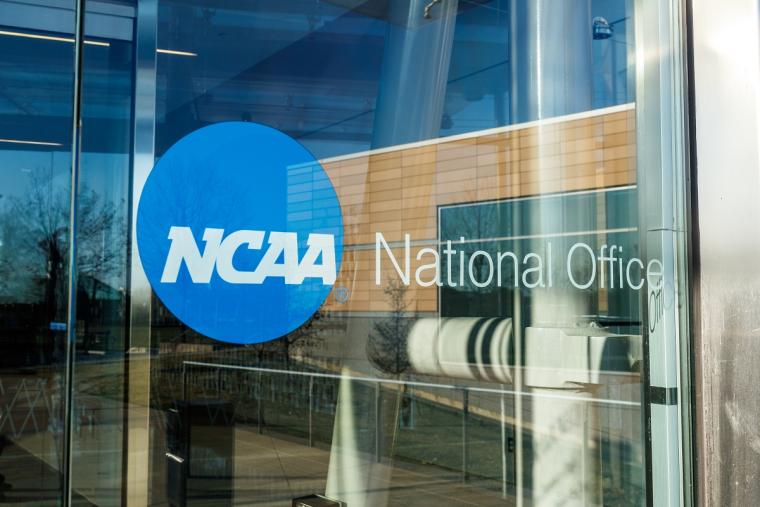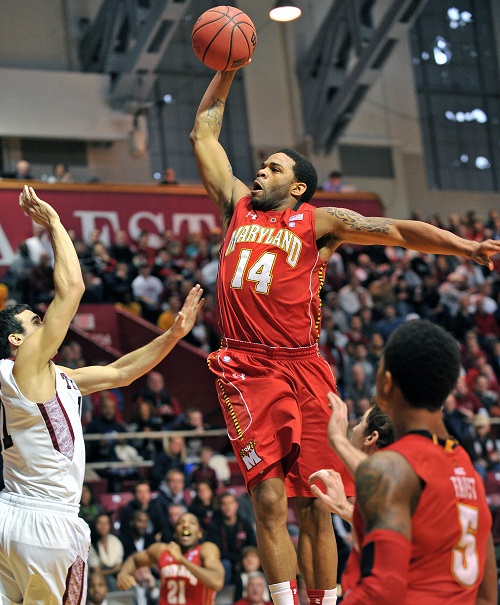
Recently, the SDM Blitz covered the salient points of the report of the NCAA’s Division I Transformation Committee. Among other recommendations, the committee wanted to allow certain sports (those sponsored by at least 200 schools) to have an increase of up to 25 percent of teams competing in annual championship events.
The NCAA Division I Board of Directors approved those recommendations during its most recent meeting, held during the NCAA Convention in San Antonio, according to an official message carried on the organization’s website.
The report, available for download here, makes a number of recommendations (more on those in a minute) but for now, it is essential to ask how this will affect tournaments in future years.
The key words, say those involved, is future. Nothing is going to take change immediately.
In terms of the enlargement of championships (the first item on everyone’s mind), decisions will be left up to each applicable sport. In other words, although adoption by the DI basketball oversight committee could take those tournaments from their current cap of 68 teams up to 90 teams each, it is nowhere near a certainty that it will happen, much less any time soon.
“It’s not directed toward a specific sport, but it is a recognition of the notion that the division has grown significantly,” Ohio athletic director and Transformation Committee co-chair Julie Cromer told reporters for The Athletic. “(It) may not work for a particular sport or a series of sports, and if they don’t, that’s OK. We will have been better for the conversation.”
What would be applicable to all Division I institutions would be the standards and expectations for support and enhancement of the college athlete experience.
Other changes recommended by the committee include things that would be largely invisible to the public (but experienced by athletes) and those that would be internal to NCAA only. ESPN did a great job of paraphrasing them as follows:
Athlete Benefits
- Require all Division I schools to provide medical coverage for athletically related injuries for a minimum of two years following graduation or the completion of participation. The recommendation says that a national coverage model might be needed to help some programs cover costs.
- Require schools to attest that they provide career counseling and life skills programming to athletes including, at minimum, the following modules: mental health; strength and conditioning; nutrition; name, image and likeness (NIL); financial literacy; transfer requirements; career preparation; diversity, equity, inclusion and belonging; and campus sexual violence prevention.
- Create a new D-I governance structure that will include increased participation by athletes at the campus, conference and national levels.
Membership Expectations
- Further involving athletes to be part of conference and school-level governance, which includes creating an athlete advisory committee executive team for each league.
- Schools must have on staff a licensed mental health professional exclusively dedicated to serving athletes to meeting the mental health services membership expectation.
- Schools shall complete a comprehensive review of their health and safety support services at least once every four years and provide written confirmation of completion to their conference office.
- Schools should have medical personnel with training in acute concussion and other injuries present at all NCAA practices and competitions in the following contact/collision sports: acrobatics and tumbling; Alpine skiing; baseball; basketball; beach volleyball; diving; equestrian; field hockey; football; gymnastics; ice hockey; lacrosse; pole vault; rugby; soccer; softball; volleyball; water polo; wrestling.
- Schools must employ at least one full-time staff member, with appropriate training, whose primary focus is on diversity, equity, inclusion and belonging.
 The committee recommends a review of the FBS attendance requirements to “establish more effective distinctions between the football subdivision.”
The committee recommends a review of the FBS attendance requirements to “establish more effective distinctions between the football subdivision.”
- Sports-sponsorship minimums will remain the same. D-I members must sponsor at least 16 sports.
- The committee recommends a review of scholarship limitations “once the impact of changes in other areas of the transformation committee’s review become known.”
Governance
- Eliminate the NCAA Presidential Forum, which assists the NCAA D-I board of directors in “accomplishing its strategic mission in the Division I governance structure and helps ensure that the NCAA core value involving presidential leadership of intercollegiate athletics at the campus, conference and national level is achieved,” according to the NCAA website. The forum constitutes one president or chancellor from each of the 32 D-I conferences.
- Change the composition of the D-I Board of Directors, details of which will be finalized by April, according to the report.
- The committee recommends that D-I championship tournaments seed at least 50% of the bracket.
- Each sport that holds an NCAA championship should have its own oversight committee for decision-making, as football and men’s and women’s basketball currently have.
- A full review of NCAA championship travel policies “to identify ways to elevate the travel experience for participants,” including: (1) increase per diem rates equal to D-I basketball preliminary rounds; (2) standardize the process and fee structure for upgrading to charter air travel; (3) guaranteeing charter air travel for teams traveling more than 2,000 miles and no direct flight options.
- The committee also recommends a review of (1) the revenue distribution model; (2) financial aid and roster size; (3) countable coaches and the definition of countable coaches; (4) the role of sports agents; and (5) the playing and practice seasons.
“These are concepts at this point,” Georgia president and Board of Directors chair Jere Morehead also told The Athletic. “There’s still a lot of work to be done on the details, but tremendous progress was made today. The board was very adamant in its support of student-athletes, and most of the Transformation Committee recommendations focused on how to enhance their experience.”
"Over the course of the last decade, the legal, political and cultural environment surrounding college sports has evolved faster than the rules, processes and structures we use to govern it," said Greg Sankey, commissioner of the Southeastern Conference, who together with Cromer, co-chaired the committee. "The Transformation Committee spent the last year looking at Division I from all angles and carefully crafting these meaningful recommendations we feel will modernize Division I. We're confident these important changes will meet the needs of student-athletes because they were rooted in the perspective of student-athletes. In fact, we're confident that student-athletes' voices have never featured more prominently in shaping how college sports is run."
With the work of the committee done, the work begins in other areas of the organization and for its member schools. This will be a process, rather than an event since the committee’s recommendations permeate so many levels of the student athlete experience.
"The process of transforming the NCAA cannot be limited to a committee or a 12-month timeline. Transformation must be a commitment accepted and embraced by all in Division I, particularly for those in key leadership positions. We must overcome reluctance to change the status quo through a continuing commitment to both the discomfort and opportunity created by an ongoing transformation effort," said Sankey and Cromer.

